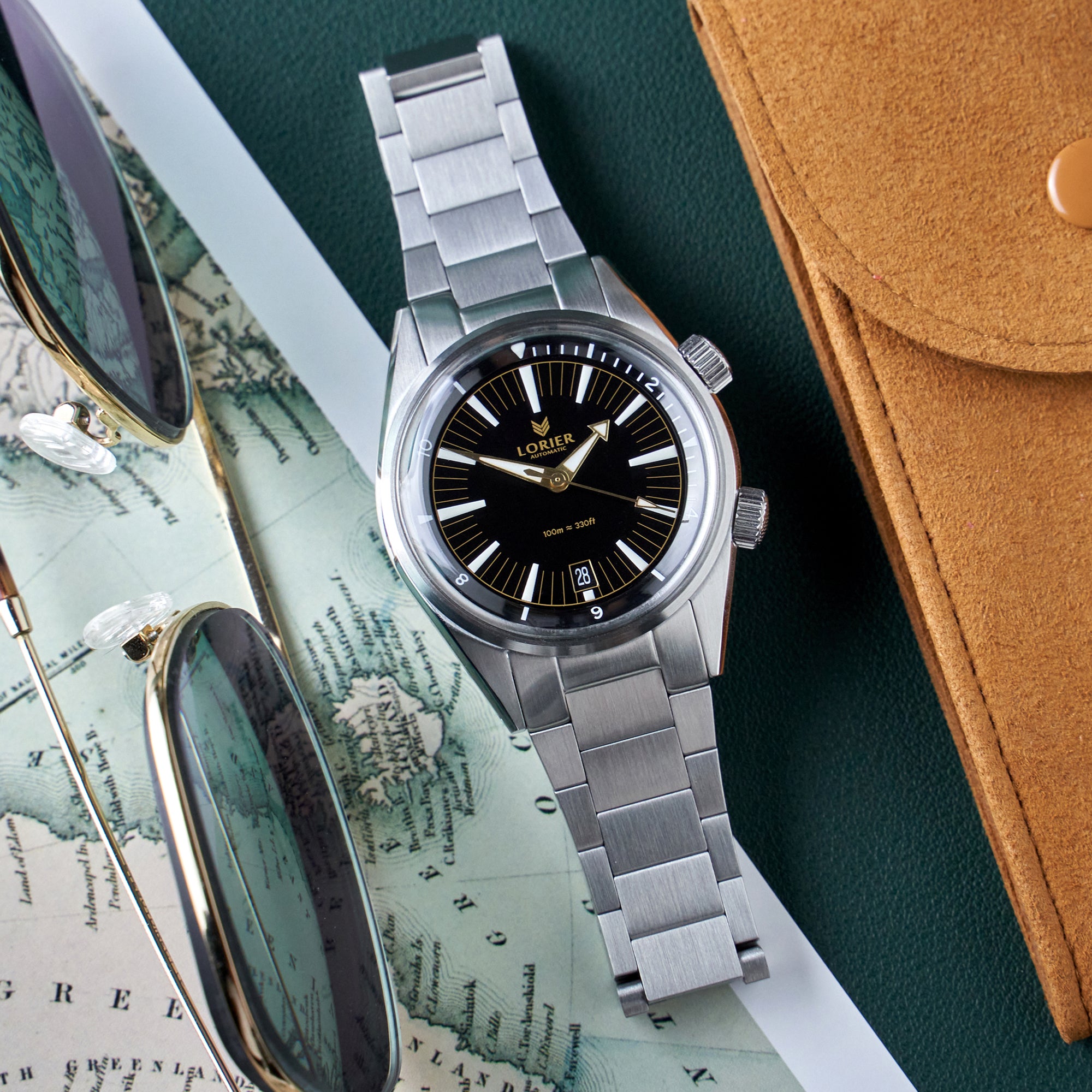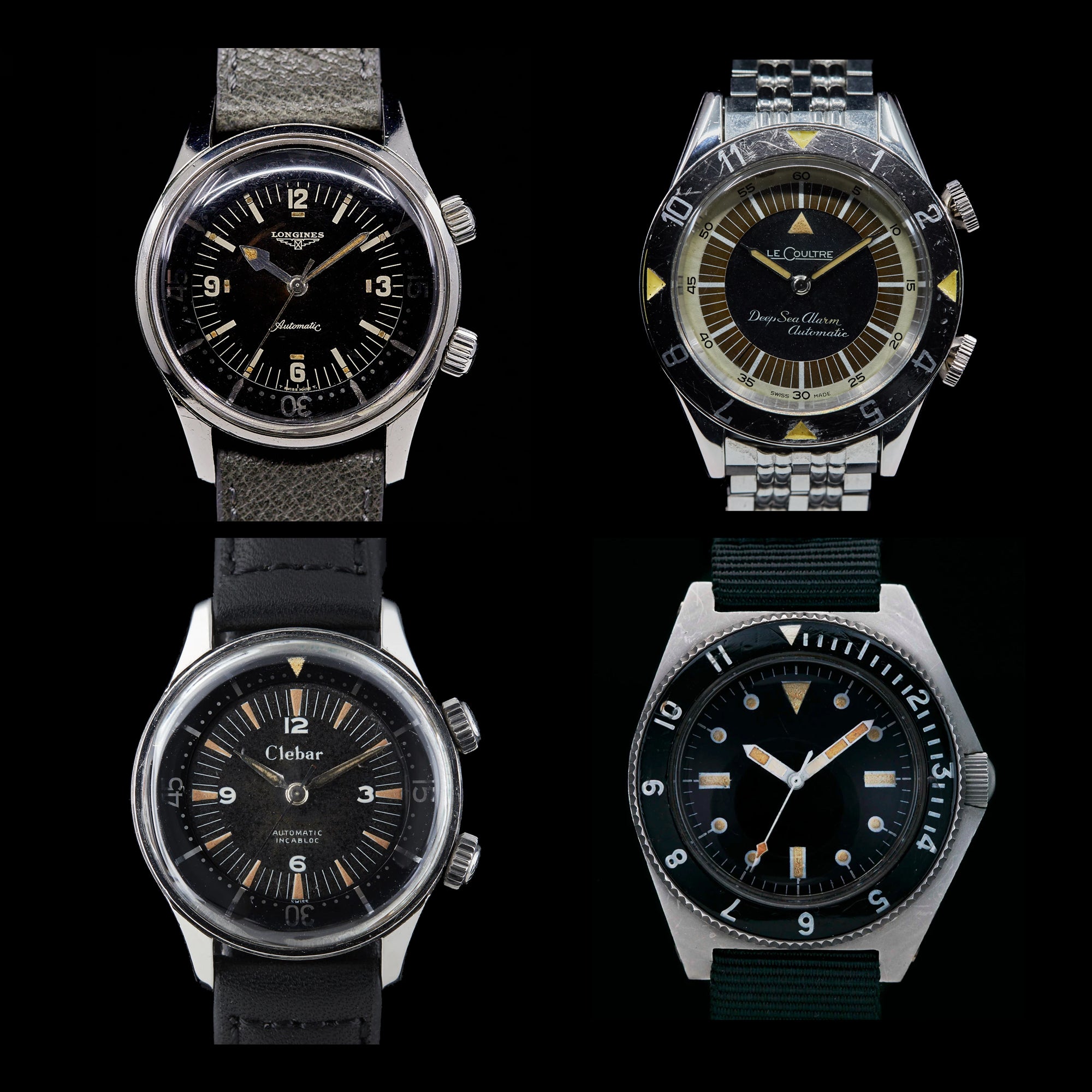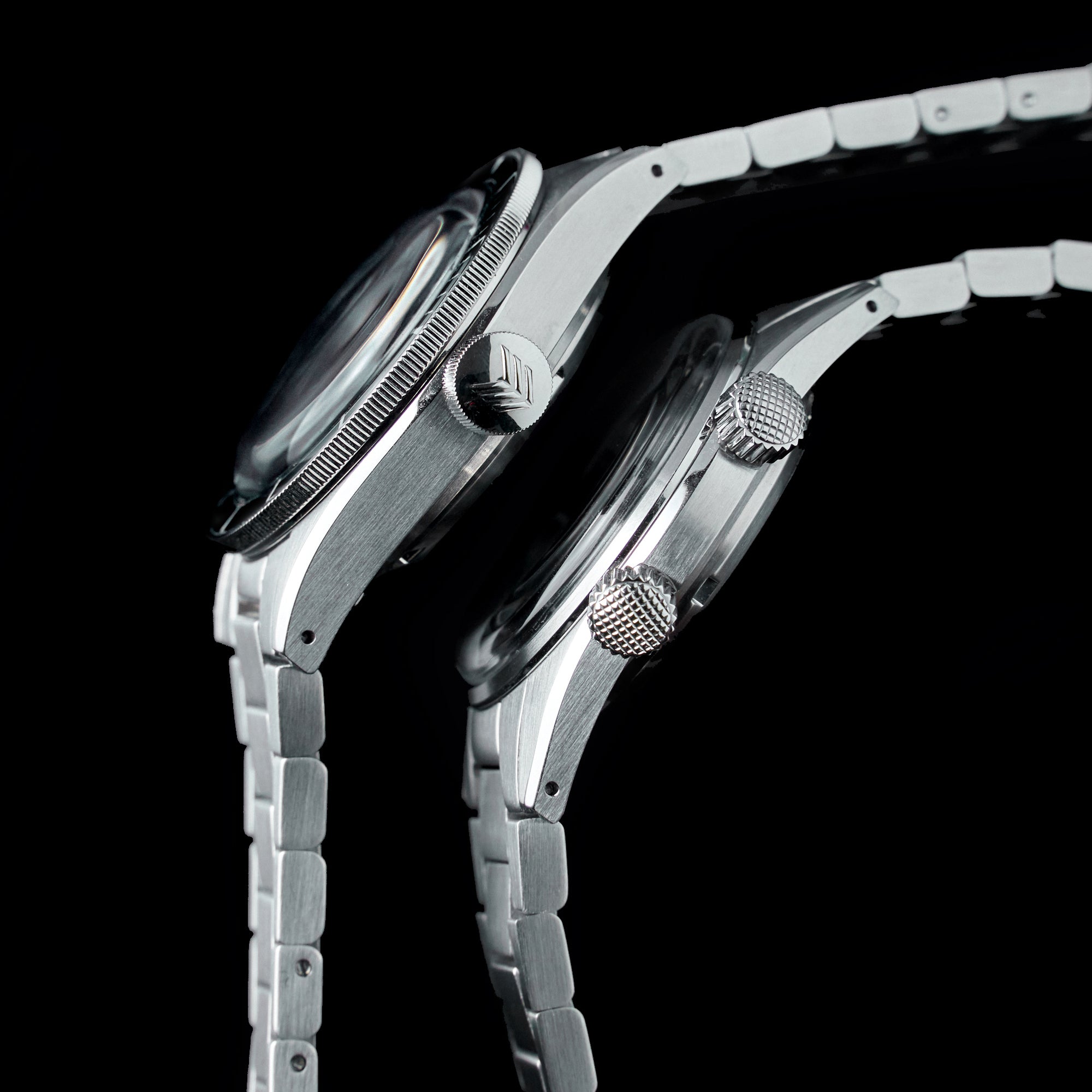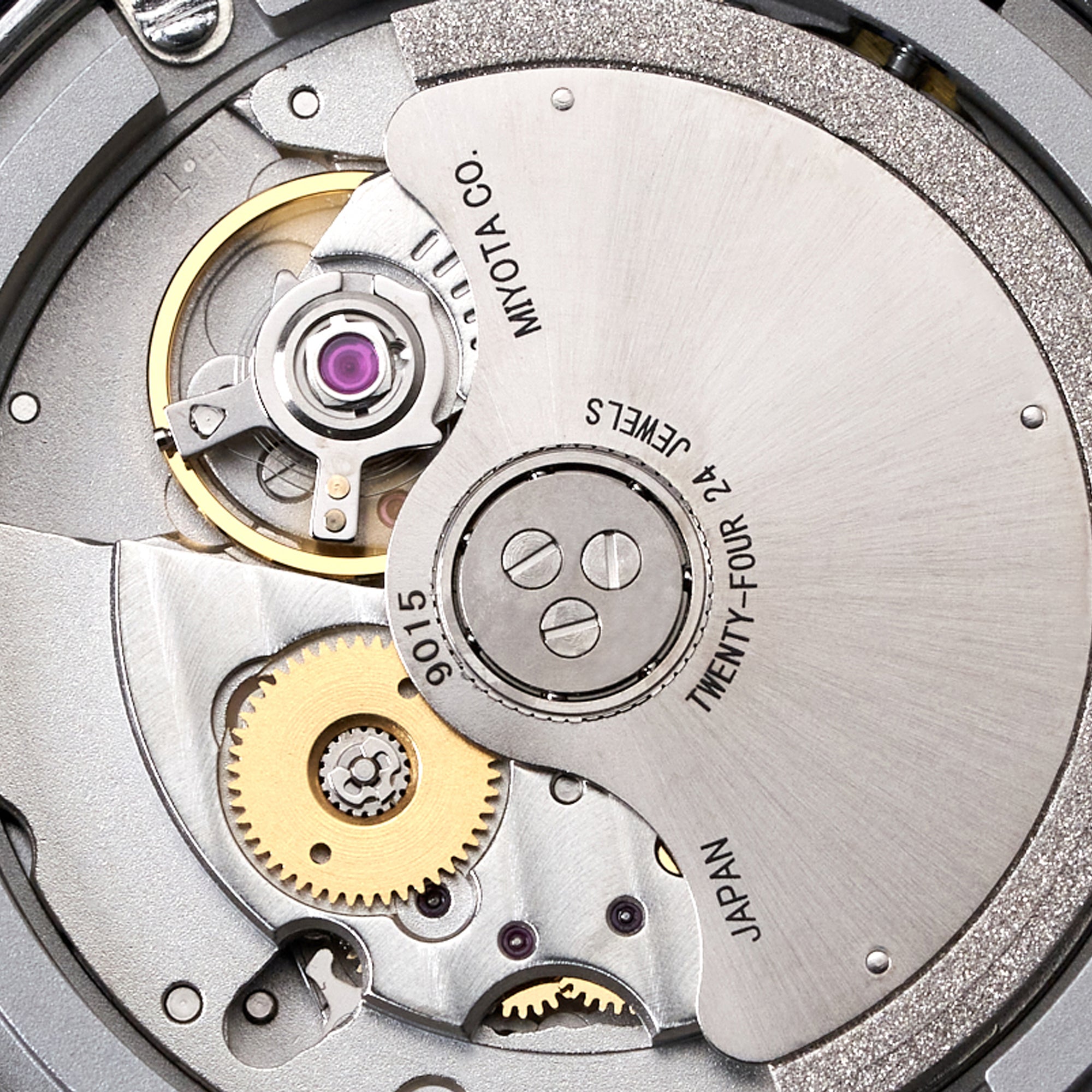
THE HYDRA
In the 1960s, a new wave of dive watches burst onto the scene: twin-crown Super Compressors. Brands from Hamilton, to Longines, to Lecoultre came to use these new cases manufactured by the now-defunct Ervin Piquerez SA (or EPSA).
The Hydra Series II is our tribute to these dynamic dive watches. With this transition, we feel the Hydra truly shines as our sporty, funky, multi-purpose skin diver.

ORIGINS
The dual-crown design was made to limit the chances of a diver’s timing bezel being knocked off course by housing it inside the crystal and using a crown at 2 o’clock to turn it.
This was an ingenious solution for its time, since the unidirectional ratcheting bezel did not yet exist (watches with external bezels, like the Rolex Submariner, had bidirectional friction bezels until the 1980s).

THE INSPIRATION
The men and women who wore twin-crown divers came from an era of undersea daring and experimentation. There are perhaps none other that exemplify this better than Jacques-Yves Cousteau and the crew of the Calypso (picture on left). In the watch world, they’re particularly famous for wearing a wide variety of divers: from the classic Rolex Submariner, to the quirkier Omega Ploprof, to lesser-known models like the Nivada Depthmaster.

REFERENCES
While the Hydra isn’t a true supercompressor (since EPSA has gone out of business, this has become almost impossible), we still love how the twin-crown design gives a watch a more svelte appearance, with the crowns at 2 and 4 o’clock following the case lines.
Jaeger-Lecoultre Deep Sea Alarm US Edition
Photos: Analog/Shift

REFINEMENTS
With a totally new case, the Hydra comes into its own while still retaining the spirit that made its predecessor special.
The bezel now has numerals, making it easier to read and use while retaining its versatility. The dial markers have been redesigned for a more streamlined appearance and even better integration with the date window at 6 o'clock.

NEW CURVES
Thanks to its new movement and water resistance specification, the Hydra is now a much thinner watch. Measuring in at 11.5mm overall (an 8.3mm case + a 3.2mm dome crystal), vs. 15.3mm for its predecessor. The sleeker dimensions give it a more refined presence, and allow it to be dressed up or down more easily.

CRYSTAL CLEAR
There’s a reason why vintage watch lovers swear by Hesalite. It has an optical warmth and quality that other materials can’t match.
But it’s more than just aesthetics: it doesn’t suffer from glare or smudges to the same degree as sapphire. It’s better against impact. Its weakness— scratches—can easily be taken care of with a little Polywatch. For us, this reinforces the idea that a watch has a special connection to its owner, making it the better choice for a one watch collection, even today.
For more, see here.

PURPOSE BUILT
The Hydra’s bezel was inspired by military specification MIL-W-50717 as a dual-purpose navigator/submersible. It can track minutes elapsed, or a second time zone.
In this example, the internal bezel of the black Hydra shows 7 minutes elapsed. On the blue Hydra, it is twelve minutes past 8 o'clock (as indicated on the dial), and twelve past 10 o'clock in its second time zone (as indicated by the bezel) .

PURE CLASS
New to Series II, the Hydra's caseback now features the Lorier logo engraved in a circular motif, reminiscent of a laurel crown.
The center section is left blank, as a canvas for personal expression: the watch becoming a true companion and a unique piece of its wearer’s history.

THE MOVEMENT
The Miyota 9015 is the first variant in the movement manufacturer’s 9 series “Premium Automatics.” It is considerably more expensive to manufacture than the Seiko NH series we used in the previous generation because of its thinness (which allows for the Series II’s more refined design) and higher beat rate (which gives the seconds hand a smoother sweep, and helps with timekeeping accuracy).
It compares well with its Swiss counterparts, the ETA 2824/SW200. A newer design (2009 vs. 1982), the Miyota 9 is both thinner (3.9mm vs. 4.6mm), and more reliable, with significantly lower failure rates. We would be willing to wager that if the 90S5 had a “Swiss” badge, all else being equal, it would easily cost twice its price.
Some may fuss over its loud rotor, reminiscent of a Valjoux/ETA 7750. Others like that it reminds them that there is something mechanical on their wrist. In any case, the Miyota 9 is an excellent series of movements, making a high level of robustness and refinement accessible to most of us.

GO DEEP
Even though 100m qualifies for a dive watch (according to ISO 6425), some aficionados may take issue with “only” 330 feet of water resistance.
But not to worry, each Hydra is pressure-tested to this depth. If you ever happen to find yourself this deep with your Hydra, we only request that you take pictures so we can share them with fellow owners!

ADAPTABLE
Versatility in design means that the Hydra can take on a variety of looks. The caselines flow seamlessly with virtually any strap: whether nylon, perlon, shark mesh, or even leather.

DIVE IN
The Hydra is for those looking for a classic aesthetic with a more adventurous twist. Its aggressive curves and sleek lines recall an age of greater daring and discovery.
We hope you feel this spirit when wearing it, and do so as it was meant to be: a watch that is supremely practical yet no less refined, ready to go wherever you are.












